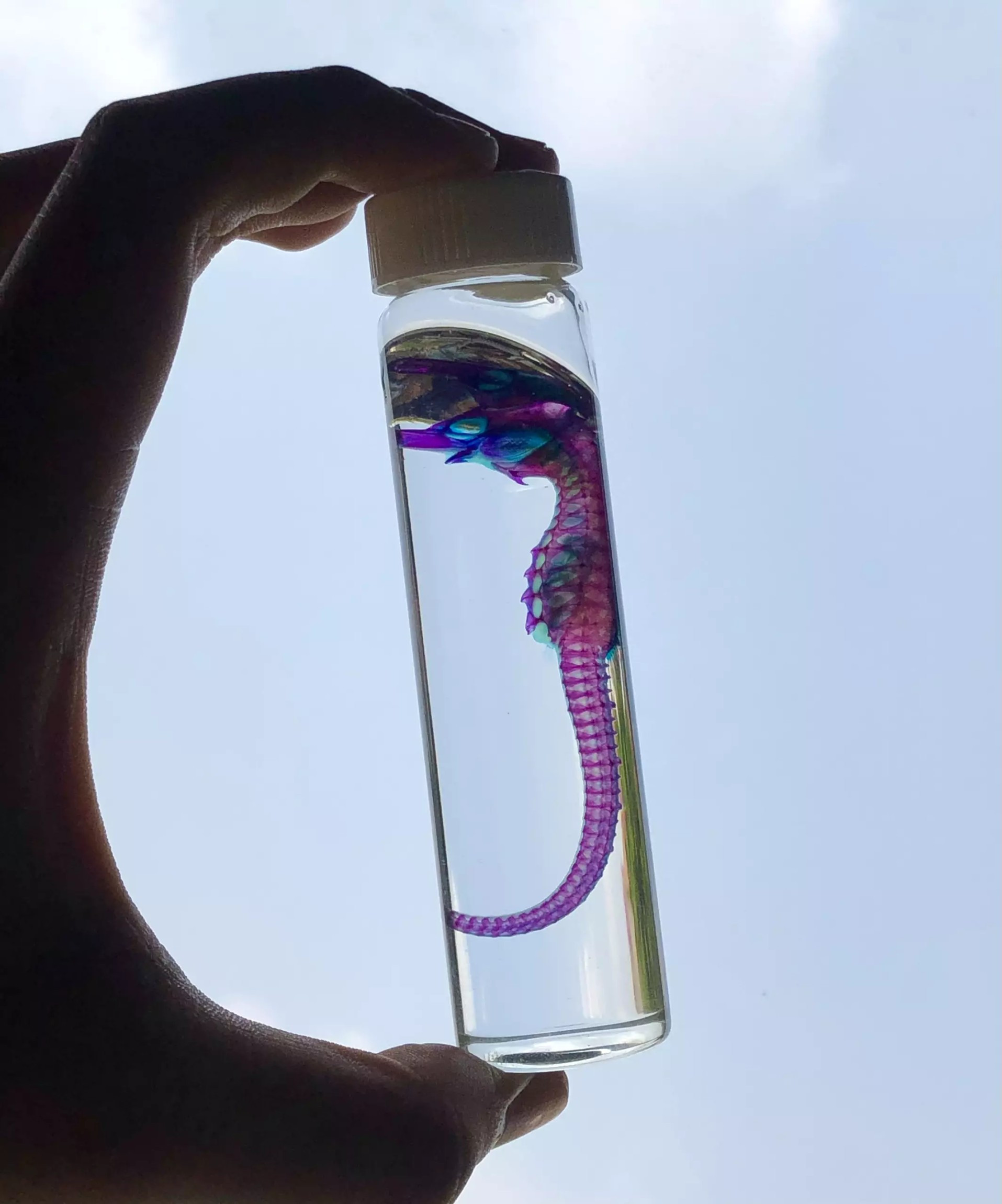
“I felt curious about the diaphonized specimen I saw on the internet, so I decided to learn about this strange subject. I felt so sorry to see animals die. I wanted to enhance the beauty of death and make every dead body have a specific beauty. I believe that animals will be happier as their bodies can be done this way, rather than have their bodies thrown away,” Duy said about the staining technique used on animal specimens.
Minh said he faced difficulties during implementation because this technique remains unfamiliar. Not having enough supplies, equipment and chemicals, and facing parents' prohibition, Duy had to do this secretly for more than 2 months.
"In order to get the nod from my parents and to spend time on my new hobby, I had to improve my academic achievements and commit not to kill animals," he said.
To have materials for staining, Duy collects dead animal bodies from ornamental fish and pet shops, friends and neighbors. After that, he takes basic steps as guided, including using chemicals to bleach the skin to make it transparent, and then stain bones and cartilage. And finally, specimens are preserved in a solution.
“After a long period, I have more experience. However, I still have difficulties in mixing colors. It’s necessary to stain bones well, so that the color is not too dark or too light,” he said.
Duy said that he mostly creates specimens in a small laboratory with tools such as air purifier, protective clothes and bottles of chemicals. He does all steps of the bone staining with information he gets from the internet and his own experience.
The chemicals used to make specimens are from the US and Canada. His acquaintances buy chemicals and then send them to him. He also orders chemicals in Vietnam.
To ensure safety, Duy wears protective clothes and uses an air purifier. After finishing a product, the chemicals are treated at his home with a machine.
After two years, Minh had created more than 50 specimens, including seahorses, snakes, Australian dragons, iguanas and lizards. The specimens created by Duy were so beautiful that many people could not believe that they were created by a ninth grader.
“In general it takes me from two weeks to two months on average to create a completed specimen, depending on the specimen size,” he said. “I once had to spend three months to create a special specimen. It was a snake, 1.2 meters long.”
Kieu Trinh